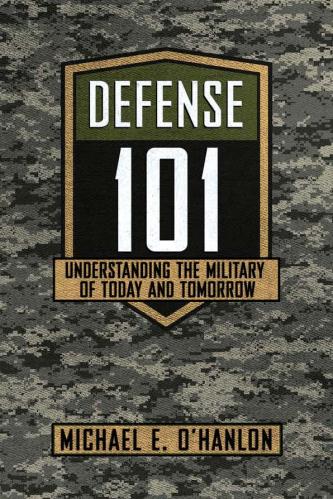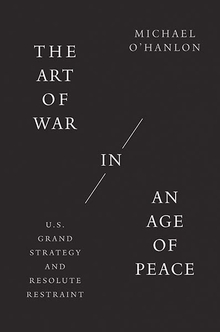“Here’s the good news. The fact that Russia notified the United States in advance of the missile test is actually a powerful reminder of the importance of arms control between adversaries. The bad news is that this type of arms control is now hanging by a thread between the United States and Russia, and virtually nonexistent between the United States and China,” writes Caitlin Talmadge. This op-ed originally appeared in the Washington Post.
Russia’s recent test of a new long-range nuclear missile has renewed concerns about escalation of the current war in Ukraine. Some analysts viewed the missile test as evidence of President Vladimir Putin’s isolation as his ill-fated campaign drags on — or even as nuclear saber rattling. Putin himself warned that Russia’s missile would “make those, who in the heat of frantic aggressive rhetoric try to threaten our country, think twice.”
Here’s the good news. The fact that Russia notified the United States in advance of the missile test is actually a powerful reminder of the importance of arms control between adversaries. The bad news is that this type of arms control is now hanging by a thread between the United States and Russia, and virtually nonexistent between the United States and China.
What did Russia test, exactly?
Russia has been developing the multi-warhead Sarmat intercontinental ballistic missile (ICBM) for several years, claiming that it can penetrate any adversary’s defenses. Although this week’s test used only mock warheads, the missile’s ability to carry hypersonic glide vehicles has led Putin to characterize it as “unique.” And a senior Russian official described the missile as a “superweapon.”
Yet for all the Russian bluster over the test, the Pentagon reacted with equanimity. Why? Because Russia had informed the United States of the planned launch under the missile test notification regime that is part of the New START accord the two countries extended last year.
Under that framework, the United States and Russia are obligated to provide advance warning of missile tests so that they are not mistaken for real launches. This helps avoid the worst-case scenario: if one side mistakenly believes that the other has begun a nuclear attack and, based on this false information, retaliates with a nuclear attack of its own.
This week, the arms control regime worked exactly as designed. “Such testing is routine and not a surprise,” the U.S. Department of Defense said in a statement after the launch. “We did not deem the test to be a threat to the United States or its allies.”
This “nonevent” — the crisis that did not happen when the Russians tested a nuclear missile amid a major conventional war against U.S.-backed Ukraine — is a prime example of the continuing value of global arms control efforts.
Arms control reduces risks, but not necessarily weapons
Arms control is often taken to mean bilateral limitations or reductions in two countries’ nuclear arsenals. That’s the form that U.S.-Soviet arms control efforts took beginning with the first Strategic Arms Limitation Talks (SALT I) in 1972. This approach has continued to characterize U.S.-Russian arms control since the end of the Cold War.
But as scholars Thomas Schelling and Mort Halperin noted in a classic 1961 study, arms control can be much broader. The concept encompasses “all the forms of military cooperation between potential enemies in the interest of reducing the likelihood of a war, its scope and violence if it occurs, and the political and economic costs of being prepared for it.”
Arms control doesn’t require close or cordial political relations. As Schelling and Halperin point out, it relies on “the recognition that our military relation with potential enemies is not one of pure conflict and opposition, but involves strong elements of mutual interest.” For the United States and Russia, these elements of mutual interest have long included avoiding misinterpretations of the other’s test launches.
U.S.-Russian risk reduction isn’t new
For decades, in fact, the United States and Russia have had other mechanisms in place to reduce nuclear risk as well — not despite a poor political relationship, but because of it. For example, after the 1962 Cuban missile crisis, the two sides developed a hotline enabling senior political leaders to communicate quickly and directly in a crisis. A similar channel still connects the United States and Russia today.
Likewise, the United States and Russia established a deconfliction hotline during the war in Syria to avoid inadvertently striking each other’s forces. The United States even warned Russia in advance of its attack on a Syrian airfield housing Russian forces in 2017, in order to avoid any Russian casualties. Russian deaths in such a high-profile strike would have dramatically ratcheted up pressure for a Russian response, risking wider escalation.
The United States and Russia recently established a similar deconfliction line to avoid unintended escalation in Ukraine. These are all forms of risk reduction that fall outside the common view of arms control as treaties to reduce weapons, but that nevertheless help to produce the key outcome both sides want: more “nonevents.”
Why risk reduction is particularly important
The likelihood that Washington, Moscow, and Beijing will sign a wide-ranging, three-way deal limiting their nuclear forces anytime soon is low. The spiraling political relationship between the United States and Russia, combined with China’s emergence as a third nuclear-armed great power, greatly complicate the prospects for traditional, treaty-based arms control as we know it. The asymmetries in the three countries’ nuclear arsenals, which now encompass very different types of weapons, make it even harder to get to yes.
Officials in Beijing have repeatedly indicated little interest in pursuing an arms control treaty. China has also been highly reticent to engage even in more limited forms of risk reduction, such as regular high-level dialogue between political leaders, or military-to-military communications in the increasingly crowded waters of the western Pacific.
The war in Ukraine demonstrates the value of such exchanges, however, even between bitter enemies engaged in active conflict. Risk reduction measures between adversaries are best established in peacetime, so that there is a foundation for further communication in a crisis or war.
Such mechanisms can be part of legally binding arrangements, like the missile test notification regime demonstrated this week. Or they can evolve informally, along the lines of the deconfliction channels that emerged in Syria and now Ukraine. Whatever form they take, risk reduction measures to ensure more “nonevents” constitute a strong mutual interest among the United States, Russia, and China, as this week’s launch underlines.
The Brookings Institution is committed to quality, independence, and impact.
We are supported by a diverse array of funders. In line with our values and policies, each Brookings publication represents the sole views of its author(s).











Commentary
Putin just tested a new long-range missile. What does that mean?
April 26, 2022